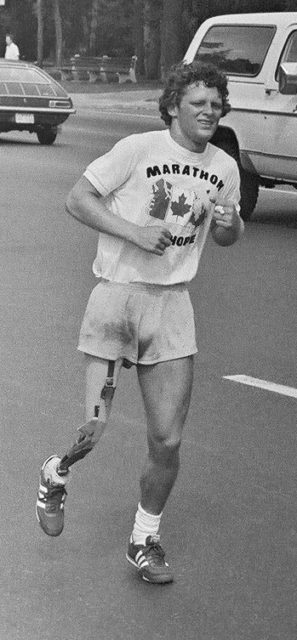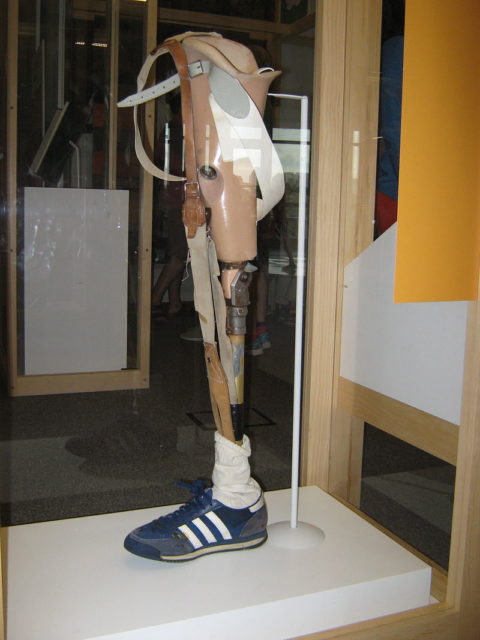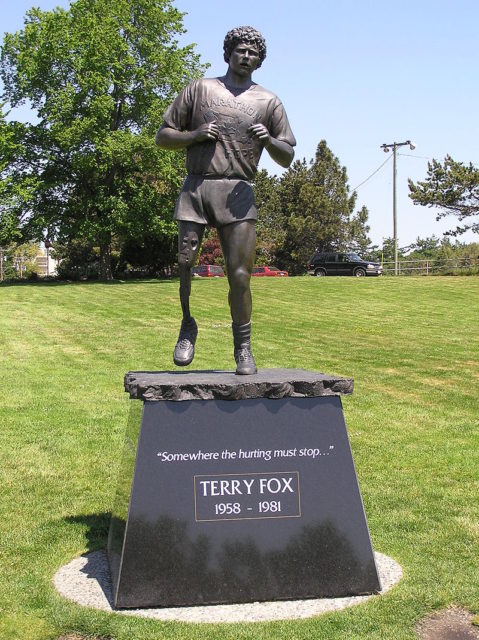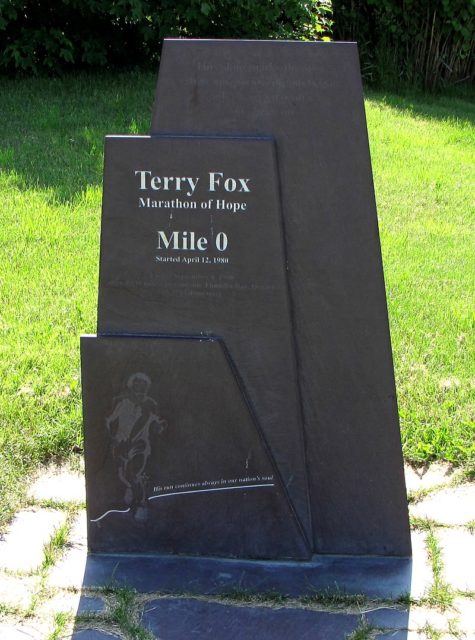“I remember promising myself that, should I live, I would rise up to meet this new challenge [of fundraising for cancer research] face to face and prove myself worthy of life, something too many people take for granted.” These were the words of Terry Fox, an athlete who was diagnosed with bone cancer at the age of 18. A young man who, after having his right leg amputated six inches above the knee and undergoing 16 months of chemotherapy, ran across Canada in the Marathon of Hope.
Terry began the marathon in the summer of 1980 from St. John’s, Newfoundland. Sadly, his cancer returned and he had to stop after the 143-day journey of 3,107 miles in Thunder Bay, Ontario. To this day, Terry is one of the greatest inspirations of how to seize life. Nobody can remain indifferent while reading his story.
Terry Fox was a kinesiology student at Simon Fraser University, where he was a member of the junior varsity basketball team in 1977, the same year he was diagnosed with cancer. Terry had been keen on sports ever since his childhood, playing baseball, soccer, and rugby, with basketball being his greatest passion. In 1976, Terry had a car accident in which his car was damaged, but he complained only of a pain in his knee, which he ignored. Five months after the crash, he finally went to the hospital and was diagnosed with osteosarcoma, a type of cancer that mainly appears near the knees.
The young athlete’s leg had to be amputated and he was told that he had a 50 percent chance of survival, a percentage that had drastically improved up to that point, as two years earlier his chances would have been only 15 percent. Instead of being discouraged, Terry was fascinated by the value of cancer research and three weeks after the operation, he was on his feet with the help of an artificial leg. He said that his misfortune made life more challenging but nevertheless, he went on, even playing golf with his father.

His positive attitude and the 16 months of chemotherapy in the facilities of the British Columbia Cancer Control Agency improved Terry’s health. While still under chemotherapy, he learned how to play wheelchair basketball in two months and became a member of the team for the national championship in Edmonton. After winning three national titles with the team, the North American Wheelchair Basketball Association named Fox an all-star in 1980.
Upon finishing his chemotherapy, and inspired by the other cancer patients he saw suffering and dying around him, Terry decided that he was going to do his part in improving medical research and that he would live his life to inspire other people who suffer from the illness.

He started preparing for the Marathon of Hope in 1979 and asked for support from the Canadian Cancer Society, saying, “I’m not a dreamer, and I’m not saying this will initiate any kind of definitive answer or cure to cancer, but I believe in miracles. I have to.” After a year, on April 12, 1980, Terry began his odyssey at St John’s, Newfoundland, dipping his artificial leg into the Atlantic Ocean. He ran approximately 26 miles a day through ice storms, bitter winds, and unbearable heat. Through Canadian villages and cities, he had determined to finish the marathon even if he had to “crawl every last mile.”
Terry had another aim to raise $1 million with the Marathon of Hope for cancer research. Isadore Sharp, the Four Seasons’ president, was the first to support Terry and pledged $10,000 to the marathon, challenging 999 other Canadian corporations to do the same. Canadians were encouraged to donate $1 so that instead of the initial $1 million, the goal was $23 million, one dollar from each Canadian. Showing their support to Terry, people would press a $100 bill into his hand as he ran by. There were people collecting up to $20,000 on the highway; villages of 8,000 that raised $14,000. There was a musician who lacked cash and gave Terry his $500 guitar. The CTV network organized a star-studded telethon that lasted five hours and managed to raise $10 million.

Terry’s journey is something that the world should never forget. It wasn’t only the physical enormity, but the athlete’s devotion and genuine humanitarianism he demonstrated to inspire millions of people. Believing that he won his fight against cancer, Terry ignored his medical appointments, but some 18 miles from Thunder Bay, after 143 days of continuous running, and a series of coughing fits and dull pain, with people lined up shouting, “You can make it all the way!” Terry was forced to stop and was taken to hospital. There, it was confirmed that that cancer had spread from his legs to his lungs.
When his parents arrived in the hospital in Thunder Bay, Terry, who, on the previous day ran 26 miles, collapsed when he got up to greet them. In an emotional scene during which his mother wept, and his father repeated, “I think it’s unfair. Very unfair,” Terry answered, “That’s the thing about cancer. I’m not the only one. It happens all the time, to other people. I’m not special. This just intensifies what I did. It gives it more meaning. It’ll inspire more people. I could have sat on my rear end, I could have forgotten what I’d seen in the hospital, but I didn’t.” He promised that he was going to do his best, that he would fight, that he wouldn’t give up.
Undergoing chemotherapy and fighting for his life, Terry was honored with numerous awards, and a mountain in British Columbia was named after him. He became the youngest Canadian to be named Companion of the Order of Canada; the Canadian Press named him Newsmaker of the Year. He was listed as Top fundraiser by the Guinness Book of Records, and many others.

Terry Fox died on June 28, 1981, at the Royal Columbian Hospital in British Columbia, just a month short of his 23rd birthday. His death was followed by nationwide mourning. On September 13 of that same year the first Terry Fox Run was held, with over 300,000 people walking, running, or cycling in more than 760 sites in Canada in memory of Terry Fox. In 1988, the Terry Fox Run became a Trust, independent of the Canadian Cancer Society. In 1992, the first international Terry Fox Run took place. In 2006, the Terry Fox Foundation announced that more than $715 million was raised to support cancer research in Terry’s name.
“Somewhere, the hurting must stop…and I was determined to take myself to the limit for those causes” – Terry Fox, October 1979
